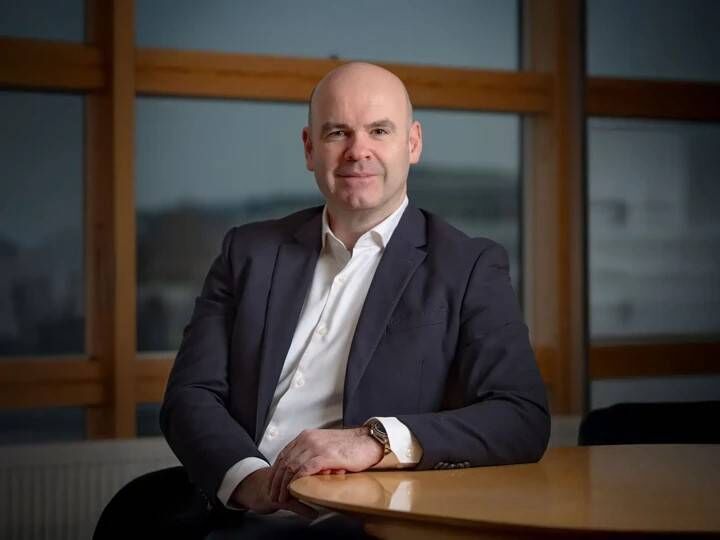Advisors key to business restructuring

It pays to bring in professionals early whenever directors are apprehensive about solvency.
Financial distress rarely arrives overnight. Margins erode, cash weakens, and boardroom optimism obscures early signs of danger.
It is in these moments, before insolvency sets in, that expert advisors make the difference between survival and shutdown. Legal and restructuring specialists agree: the earlier the intervention, the wider the recovery options.

“The biggest mistake companies make is leaving it too late,” says Shane Harron, partner at Dillon Eustace. “They often hope to trade their way out of difficulty, but that usually leads to more trouble than may have been necessary.” This reluctance is especially acute among SME directors, who may hesitate to incur advisory costs even when solvency concerns are already visible.
Under Irish law, the test for insolvency remains simple: can the company pay its debts as they fall due? If not, directors are required to act in the interests of creditors, not just shareholders.
“This has now been given a statutory footing since 2022,” Harron notes. “If directors become aware of insolvency, they must act to preserve assets for the benefit of creditors.”
There is no single indicator of distress, but signs often compound. Harron points to declining profits or difficulties in meeting essential services like rent or electricity. More subtle signals include late payments to key suppliers or unexpected tax arrears.
“Some of the early warning tools include the strategic maintenance of accounting records, regular financial projections, and a consistent analysis of debts and liabilities,” he says. These steps form part of the Companies Act’s early warning framework, aimed at alerting directors to financial danger before it escalates.
Alan Large, partner in EY’s Turnaround and Restructuring Strategy group, adds: “Typical early warning signs include breaches of financial covenants, deterioration in EBITDA performance, and sustained negative cash flows.” He also cites key non-financial triggers such as unplanned management departures or persistent customer churn.

David O’Connor, partner at BDO, points to behavioural clues. “Margins may decline, staff turnover might spike, or creditors go unpaid, but often companies don’t connect the dots. They just hope it’s a bad month.” Stephen Scott, head of Restructuring & Recovery at S&W, is clear: “Businesses do not fail because of short-term lack of profitability, they fail because they run out of cash.” Yet many companies continue operating without updated forecasts or real-time visibility of their working capital. That can turn a salvageable situation into a terminal one.

All four advisors are unanimous: bring in professionals early. “Ideally, if directors are apprehensive about solvency, they should engage an experienced insolvency practitioner as soon as possible,” says Harron. Delay reduces strategic options and can increase legal exposure.
“Companies may only face one major crisis in a generation. We deal with them all the time,” says O’Connor. That perspective allows advisors to help with prioritisation, from critical payments and staff communications to negotiations with banks and landlords.
Scott notes that for SMEs especially, outside advisors can break decision-making deadlock. “Directors may feel that nobody knows the business better than them, but expert advice brings not just restructuring knowledge but also a third-party perspective that cuts through noise.” Early advisor engagement also protects directors. Large explains: “If a business continues to trade while insolvent and incurs further losses, directors may face restriction or disqualification. Professional guidance helps avoid that.”
The first phase of any restructuring advisory engagement is diagnosis. Harron explains: “We investigate the company’s financial affairs, taking account of assets, liabilities, income and obligations. We assess whether insolvency has occurred, and what rescue options may be available.” O’Connor’s team focuses on operational fit. “We examine whether the company is structured for today’s market, not yesterday’s. You’d be surprised how many firms carry legacy overhead from products or divisions they no longer run.” That mismatch often emerges in underused space, bloated wage bills or historic debt that no longer reflects business realities.
“You might have €500k in rent but only two-thirds of the space in use. Or staff working legacy roles in departments that have shrunk. That needs to be rebalanced quickly,” O’Connor says.
Where viable, companies can enter formal rescue procedures. In Ireland, examinership and the Small Company Administrative Rescue Process (SCARP) dominate. Both give legal protection from creditor action while a survival plan is developed. The difference lies in scale and cost.
“Examinership is court-led and suited to larger companies,” Harron explains. “SCARP is more streamlined and avoids court unless objections arise. It’s designed for SMEs.” The process begins with the appointment of an independent expert.
“We provide the initial report in both examinership and SCARP,” says O’Connor. “That assessment determines whether there is a reasonable chance the company can survive as a going concern.” If accepted, creditors are grouped into classes and vote on a rescue plan. Once approved, by court or process adviser, those classes are bound, including dissenters.
Execution demands discipline. “Advisors play a key role in identifying non-essential expenditure that can be reduced or eliminated,” says Large. Often this includes exiting loss-making contracts, trimming staff costs, or negotiating revised terms with suppliers.
Scott highlights the importance of cash control. “We help businesses strengthen credit procedures, engage constructively with lenders, manage phased supplier payments, and prepare detailed short-term cash forecasts.” Forecasting has become non-negotiable. “Many companies operate in an information vacuum,” says Scott. “That’s no longer acceptable in a restructuring context.”
Restructuring is not linear. It can unravel if boards are divided or if directors fall into wishful thinking. “We sometimes see directors continue trading in the hope of a miraculous turnaround,” says O’Connor. “That usually just deepens the hole.” Large adds that hostility between directors, shareholders or lenders often derails otherwise viable plans. “Restructuring requires cooperation and transparency. A confrontational approach delays progress.” Another risk is poor record-keeping. Harron warns: “Directors must maintain clear board minutes showing the rationale for decisions taken. Those records become critical if the process fails and leads to liquidation.”
Insolvency proceedings often trigger scrutiny of directors’ conduct, something legal advisors are best placed to manage. As Harron says: Where a company goes into insolvent liquidation or receivership, the liquidator must file a report with the CEA (Corporate Enforcement Authority) and consider whether to bring restriction proceedings against the directors.” These proceedings assess whether directors acted ‘honestly and responsibly’ in the lead-up to insolvency. If they are found lacking, courts can impose a five-year restriction on holding directorships, or in more serious cases, disqualification.
Harron emphasises the importance of pre-emptive action. Directors should keep accurate books and records, seek professional advice at the earliest sign of financial trouble, and document decisions thoroughly. These steps form a crucial defence if proceedings are later initiated. While there is no legal obligation to place an insolvent company into liquidation at the first sign of distress, delay increases exposure.
Harron notes that ‘the strategic maintenance of accounting records, regular financial projections and a consistent analysis of debts and liabilities’ form part of the Companies Act early warning framework, tools that, if properly used, can guide directors through uncertainty and reduce personal risk.
Strategic outcomes Sometimes the path is salvage. O’Connor shares a recent case: “A national food chain entered examinership. We prepared the independent expert report, and the court appointed an examiner. That gave them space to restructure. It protected jobs and kept the brand alive.” Other times, value is recovered even in liquidation. Harron notes a case where the company had lost its overseas licence. “The liquidator reinstated the licence, completed manufacturing, and extracted higher value than by simple asset sale. Creditors benefitted.”
Governance, ESG and structural complexity Modern restructuring involves more than cash and contracts. Governance, ESG and tax efficiency now feature prominently. “Governance failures are closely examined in formal processes,” says Large. “Sophisticated lenders now ask about ESG and strategic alignment before funding.” Group structures also require scrutiny. “Even mid-sized businesses can have overly complex structures that add cost and risk,” says Scott. “Restructuring presents a chance to streamline and unlock value.”
Strategic restructuring is about timing, clarity and decisive action. Directors who confront distress early and engage advisors improve their odds of recovery. Those who delay may find that the path to rescue has narrowed or closed entirely. In today’s climate, where cash runs tighter and lender tolerance is thinner, that distinction can be fatal.








